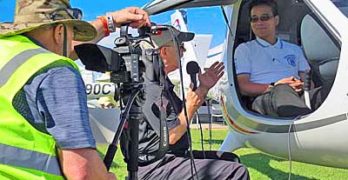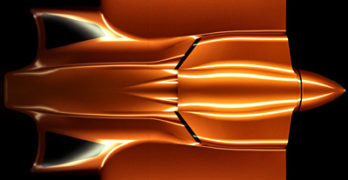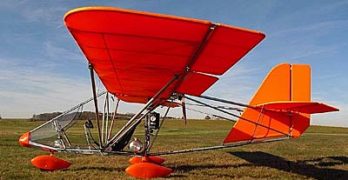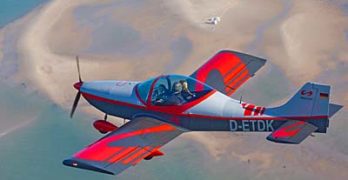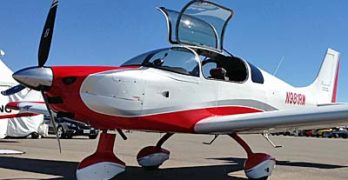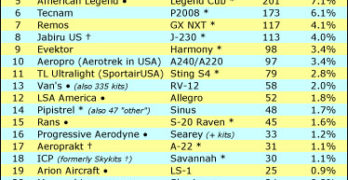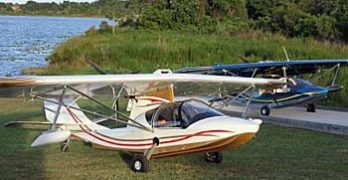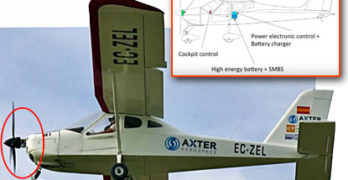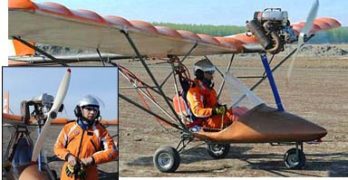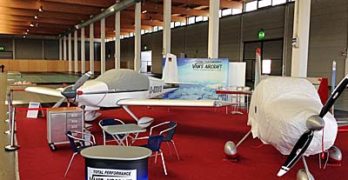The super-short summary of Sun ‘n Fun 2016: weather was beautiful; even the one night of rain gave way to a sunny day and all other days were as good as it gets. No accidents occurred to my awareness. Crowds were good if not record-setting. Airplanes were sold; I conservatively estimate about 30 sales of light aircraft, based on my inquiries. What’s not to love?
As with any such attempt to cover an event the size and breadth of Sun’n Fun, this article cannot include all deserving aircraft, with regrets to any not mentioned below. We also shot lots video that will follow as the editing can be done (photo).
This article is longer than I prefer but I have plenty to tell you and I was simply too engaged during the event to keep posting. So… let’s get going!
AIRPLANES (three-axis control) — Sun ‘n Fun drew all the wonderful light airplanes we love but a few were touting fresh news not previously reported.
Search Results for : Flight Design
Not finding exactly what you expected? Try our advanced search option.
Select a manufacturer to go straight to all our content about that manufacturer.
Select an aircraft model to go straight to all our content about that model.
A Powerful Wave Is Headed Your Way!
Unless you’ve had your mind on other pursuits — oh, for example, preparing to head to Sun ‘n Fun 2016 next week (the show runs April 5-10) — you could hardly miss the growing buzz surrounding Icon. A soft whistle of air escaping the cabin turned into a deafening roar as Aero-News.Net (always fast with news), AOPA online, AVweb and others piled on to a story about Icon’s 40-page A5 purchase contract.
Credible journalistic work was done by Jim Campbell, Jim Moore, and Paul Bertorelli (respectively of each of the publications mentioned above) in documenting the behemoth contract. I have an opinion too — one part respectful of the California company’s wish to protect their brand and their investment and and one part saying, “What the…?” I see no reason to delve into further than the lengthy stories my fellow writers already posted.
Instead, I like following what’s new in Light-Sport Aircraft, light kit aircraft, and ultralights.
Sun ‘n Fun Preview … 17 Aircraft to Check
Every year before the big shows, I often hear from journalist friends working for other publications. This year as other years, they need advance knowledge to get things started for print publications working on longer deadlines than those of us in the online publishing game. To help my fellow writers, I’ve been keeping a tally of what I expect at Sun ‘n Fun 2016. Here we go…! By the way, these are not order of importance or impact. Please don’t assume.
U-Fly-It, producer of the popular and agreeably-priced Aerolite 103 (ready-to-fly for well under $20,000) is well along in planning for a kit version. While running their facility at or near capacity, this move may help get airplanes to people faster plus allowing those who want features that will not qualify as a Part 103 ultralight to go Experimental Amateur Built.
Thinking of modestly priced aircraft, Quicksilver will be represented at Sun ‘n Fun at the Air-Tech space.
Breezer Gains EASA’s Restricted Type Certificate
A well-worn line is often repeated by those trying to gain approval for an aircraft. The line is typically employed referring to FAA Part 23 type certification because that regulation dictates massive documentation of design, testing, production systems, and more. It is often stated humorously but it’s quite serious.
“When the paperwork weighs more than the airplane, you’re done!” It means an impressive amount of documentation is required to get FAA’s blessing for a new Cessna-Cirrus-Diamond-Piper.
In recent news about the approval of a Light-Sport Aircraft by the European Aviation Safety Agency, Breezer lays claim to a fairly rare credential.
Breezer is only the fourth LSA I am aware of to achieve Restricted Type Certificate approval from EASA, the Europe Union equivalent to FAA. The first two were (in order) PS-28 Cruiser from Czech Sport Aircraft followed by the CTLS-ELA from Flight Design. Both were awarded at Aero 2012.
Flying Sling 4 … Airman’s Medical Update
As I’ve indicated many times in the last couple years, this website seeks to deliver news and video about Light-Sport Aircraft, light kit aircraft, ultralights, and light GA aircraft. The latter refers to four seat (and larger) aircraft created by the same companies that make LSA or kits. Specifically, I do not plan much on Cessna, Piper, Cirrus, Diamond, and other legacy brands as every magazine already examines these every month. Instead, I plan to cover emerging models from companies that established their brand in the LSA space: Tecnam, Flight Design, Pipistrel, Evektor, Van’s and The Airplane Factory. These six manufacturers are presently in the four seat game either with ready-to-fly aircraft or four seat kits. More are expected to follow.
At Copperstate 2015, I finally got a chance to fly the Sling 4 from The Airplane Factory, which I had been anticipating since enjoying the Sling LSA.
SLSA N-Number Registrations in First Half 2015
The U.S. market for Special Light-Sport Aircraft continues to grow at steady pace, modestly better than the trend for single engine piston certified aircraft as reported by the General Aviation Manufacturers Association for the first half of 2015.
SLSA deliveries in the half-year period totaled 97 units, with 91 of those coming from 15 manufacturers, showing that the famous 80/20 rule still generally applies … more than 80% of the market is supplied by less than 20% of the builders. It also implies the majority of those companies who previously earned FAA acceptance for their LSA models are either quite slow or inactive in the U.S. market.
We’d prefer to describe vigorous growth but the so-named Great Recession seems to be lingering on; at least it appears the much-talked-about recovery has left most of aviation still looking for improved business. Evidence of a still-troubled global economy is even clearer when you consider the wild stock market gyrations of recent weeks.
The World of LSA and American Opportunities
Updated 8/21/15 — This article has been updated with a reader comment seen at the bottom.
When the SP/LSA regulation was announced 11 years ago nearly all registered Light-Sport Aircraft originated in Europe. Indeed, the first two accepted as SLSA were the Evektor SportStar and Flight Design’s CT series. For several early years, Europe accounted for more than two-thirds of all LSA brands in the USA.
However, in a decade, a lot has changed.
Now, American companies have had time to shift from kit making (a very different business model) or have developed brand-new aircraft or offer a revised version of an existing model to meet the ASTM standards so they could gain FAA acceptance.
American companies are also starting to make inroads into other countries that accept ASTM standards.
Some countries simply copy FAA regs while others accept the ASTM standards set and then layer on some of their own regulations.
Add-On Electric Motor Emergency & Boost Power
A few years back at Aero 2009, Flight Design and Rotax teamed up on a very interesting project. Based on the R-912 engine they added an optional electric motor that could provide additional torque (a characteristic electric motors have in abundance) for takeoff and climb or for emergency power in the event of a failure. The idea more than intrigued me and many others but it quietly disappeared.
Recently a Spanish university announced it had taken this concept to the next step. The team investigating this seemed focused on the emergency factor but opened the door to combined used of electric motor and gasoline engine. In case of a conventional engine failure, while very unlikely, an electric motor can, they said, deliver another 20 kilometers or 12.5 miles of range. That would be a literally saving grace to the pilot and occupants of a troubled aircraft.
Researchers at Universidad Carlos III de Madrid (UC3M) and the Axter Aerospace firm developed an electric propulsion system to install in light aircraft to deliver extra power and range in emergency situations.
Chinese Pilot Seeks to Fly for Fun
WEEKEND UPDATE — Next week I leave for my first visit to China, specifically to Anyang City, by train a couple hours south of Beijing where the seventh running of an annual airshow is planned. I have only a sketchy idea what to expect even though Shu Dong Li of the Aero Sport Association has briefed me as has my European counterpart (in our work for LAMA), Jan Fridrich. In the last year alone, Jan has made nine trips to China as the Czech government is assisting Chinese authorities in work to build personal aviation in that country.
At the invitation of Shu Dong and Anyang City officials I was asked to speak at the event and I will join several other Americans all invited for the occasion. I expect this will prove interesting. While no one expect China to suddenly explode with light aviation activity, various groups are vigorously pursuing the future of recreational flying and this country has accomplished a great deal in a short time.
First Glimpses of Aero’s Interesting Aircraft
The great halls of Aero are beginning to be populated with aircraft, even as most of the gymnasium-sized spaces remain significantly empty. It was only Monday and the show does not open until Wednesday, so with common airshow nonchalance … “Oh, plenty of time remains.” After being an airshow regular for more years than I care to count — several decades’ worth — the situation is par for the course. Even the night before a show opens, the exhibit area appears in a state of pandemonium. Year after year, I can see no way it could all come together in time for the first day when the entry gates are unlocked, yet when the sun rises on opening day, sure enough, nearly everything seems in place, people are streaming in, vendors are dressed in airshow logowear and are ready to talk airplanes or flying gear. It never ceases to amaze me.
- « Previous Page
- 1
- …
- 18
- 19
- 20
- 21
- 22
- …
- 147
- Next Page »


